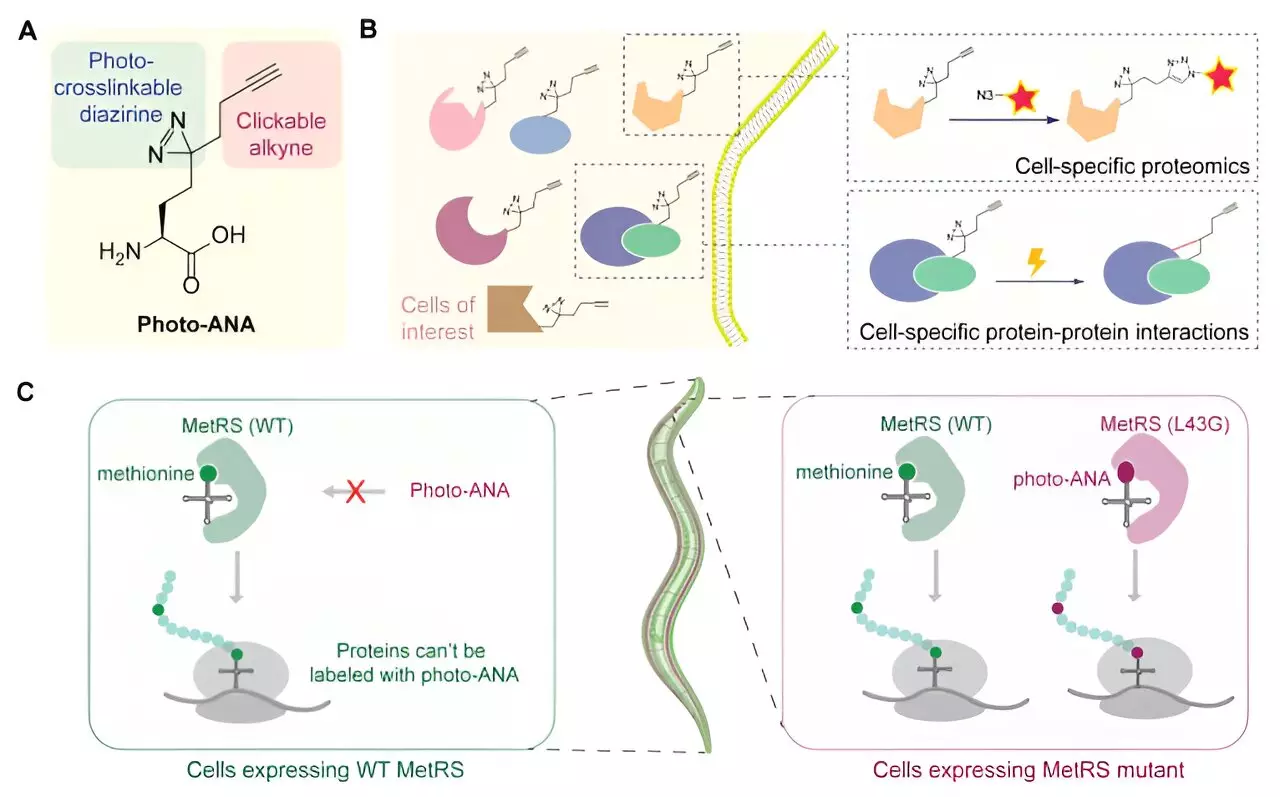In multicellular organisms, such as animals and plants, cells have complex functions that require interactions between various proteins. However, our current understanding of protein-protein interactions often lacks cellular contexts due to the limitations of in vitro studies. To address this gap, a collaborative research team from The University of Hong Kong recently developed a novel chemical biology approach to study protein interactions in a tissue-specific manner.
The team utilized a bifunctional amino acid probe, called Methionine Analog-based Cell-Specific Proteomics and Interactomics (MACSPI), to label proteins from specific cells. This approach allowed the team to isolate and capture protein interactions through photo-crosslinking. By using a modified enzyme to incorporate the unnatural amino acid into proteins, the team was able to selectively label proteins from specific tissues and capture tissue-specific protein complexes.
Discoveries and Implications
Using the MACSPI method, the research team identified many new tissue-specific proteins and protein interactions in muscle cells and neurons of a model organism. This allowed them to better understand how cells work in living organisms and study various biological processes, such as organ development and disease pathogenesis. For example, they found that a molecular chaperone called HSP90 interacts with distinct sets of proteins in muscle cells and neurons, regulating different biological processes.
The team envisions that the MACSPI method can be applied to various multicellular organisms to profile proteomes and interactomes with spatial and temporal specificity. This has the potential to facilitate a wide range of biological and biomedical research, including the study of neurodegeneration in diseases like Parkinson’s. By understanding protein-protein interactions at the cellular level, researchers can decipher the molecular mechanisms underlying pathological processes and develop targeted therapies.
The study highlights the importance of understanding protein-protein interactions in multicellular organisms and the development of innovative methods, such as MACSPI, to study these interactions in a tissue-specific manner. By uncovering tissue-specific proteins and interactions, researchers can gain valuable insights into complex biological processes and diseases. The MACSPI method opens up new possibilities for studying protein interactions in living organisms, paving the way for advancements in biological and biomedical research.



Leave a Reply